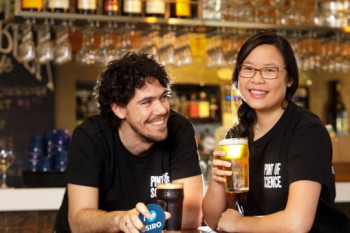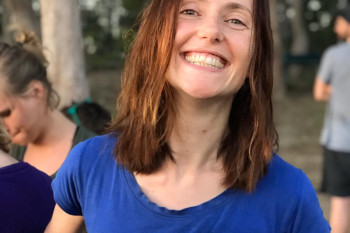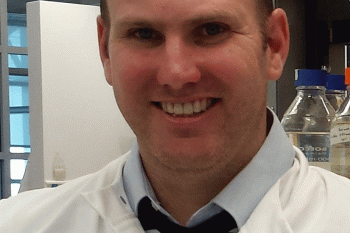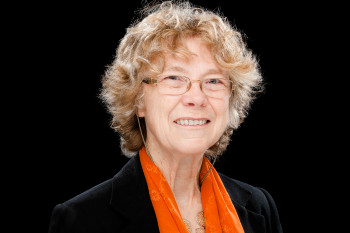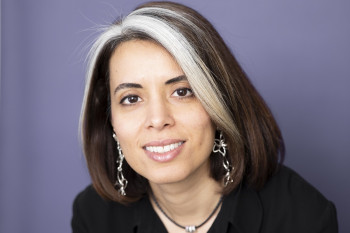© Pint of Science, 2025. All rights reserved.
Galactic Origins
Professor Richard de Grijs with Dr Larissa Fedunik
What do galaxies get up to when they're not colliding—or pinching each others' stars?
We met up with Macquarie University astrophysics professor Richard de Grijs to get the low-down on Cepheids, the origins of galaxies and Magellian Clouds.
Richard and his team’s research made a big splash recently in 2019, when they published a paper revealing that our Milky Way is way more warped than previously believed.
You can also spot Richard giving tours at the Australian National Maritime Museum and at Thursday night trivia with his team “The Random Thoughts”.
~~
Richard joined Macquarie University as a professor of astrophysics and associate dean in 2018. He supports a fantastic team of students, currently spread around the world. In his downtime, you'll often find him as guide, speaker, or deck hand at the Australian National Maritime Museum.
You can find out more about Richard and his work at his website, or by following him on Twitter (@tallstarman).

~~
Transcript
Professor Richard de Grijs: You know, follow your heart, do what you're interested in. You may think that you're not doing something that's of immediate applicability, but you learn a lot of skills that that will stand you in good stead when you go out into the world. Astrophysicists are highly numerate people, we're not afraid of large numbers!
Dr Larissa Fedunik: Hi everyone and welcome to Mug of Science. Mug is an initiative from Pint of Science where we sit down and have a chat with a local scientist over a morning cuppa. My name is Larissa Fedunik and today I'm at the Macquarie University campus and I'm lucky enough to be joined by Professor Richard de Grijs, who is an astrophysicist at the Department of Physics and Astronomy at Macquarie. Richard's astrophysics research has taken him all over the world. He moved to Macquarie University several years ago and he still supports a fantastic team of students and researchers all over the world. So today we're going to be chatting about Richard's work but also his life outside astronomy and astrophysics and also take a journey perhaps and step outside our own galaxy and find out what galaxies get up to, whether that's stealing each other's stars or engaging in something like intergalactic fireworks.
Richard: We could do that, yes.
Larissa: So thanks so much again for joining us, Richard.
Richard: My pleasure. Thank you.
Larissa: So first up, Mug of Science. Very important question: what is in your mug or rather takeaway cup today?
Richard: This is a flat white. Before I moved to Macquarie about three and a half years ago I used to get lattes all over the place, but flat white is a very Aussie thing and a very South African thing, so I've become "Aussified" ever since I moved to Macquarie, and it's a small one because if I take too much caffeine I'm going to be buzzing all day.
Larissa: Oh nice. And so you're originally from the Netherlands, what's the most popular style of coffee there?
Richard: Just straight up what you have like long black, we don't call it long black. It's just a cup of coffee. All these fancy lattes and flat whites, that was not done at the time I was based in the Netherlands, that was just that was an American thing.
Larissa: Ah I see, yeah nice. So before we get into the science, let's talk a little bit about you as a person. What are your interests and hobbies?
Richard: Oh, I've got a wide variety of interests, actually. International travel is a great interest but it's very difficult currently under pandemic rules, it's a problem actually because my wife is Chinese and she's stuck in China at this point so because of the pandemic, we have been separated for a while and so we're looking forward to that all resolving itself but if I can't travel, I spend my weekends at the Australian National Maritime Museum in Darling Harbour in Sydney as one of the volunteer guides, so if you come on Sundays you will find me on one of the four vessels that are open to the public possibly as a tour guide on the submarine we have I've also been put in charge of winding the Harrison clocks which is a new thing. John Harrison, in the early to late 18th century, eventually resolved the sticky longitude issue, how to determine longitude at sea. You need you need a clock for that, but by traveling from northern hemispheres to from temperate latitude to the equator, you get temperature changes and that changes that changes the metal constant and therefore the spring constant and that changes your timing issues, so having clocks on ships is actually very complicated and Harrison solved that problem by the by the late 18th century. At the Maritime Museum we have copies of H1, his first clock from the early 1700s, 1730 or so and H4, which is the final clock that won about half of the prize and very soon we'll be starting winding them on weekends for a general audience and so the museum has asked me to take charge of that. I do a lot of things with them because it's my social circle as well. This weekend I'll be sailing as a deckhand on the Dolphin, which is one of the historic ships that we have. That's a fantastic experience, you need gloves and it's quite a lot of pulling of ropes, but you know, follow the captain's orders. It's great fun yeah, and I do regular trivia nights as well, so it's Thursday night we're having this interview, I'm doing a Thursday night trivia night tonight.
Larissa: Oh nice, do you have a go-to trivia team name?
Richard: Oh yes, we are "The random thoughts" at the Village Inn in Paddington. Come and try and challenge us please!
Larissa: Open challenge to our Mug viewers. Yeah nice, so these are quite a diverse range of interests.
Richard: Look, I've been around as a scientist for a while and your interests shift over time and they broaden as well and so I started off being very focused highly focused on hardcore astrophysics and I do a lot of that still with my students and younger scientists but in recent years I've expanded into the history of science and I'm actually quite excited about that. I've done a number of projects including a recent project on the location of the very first observatory in Sydney in New South Wales. There's a plaque on the southern pillar of the Harbour Bridge that says that the observatory was at a certain location at what's called Dawes Point, but it wasn't. We found out that the plaque is incorrect.
Larissa: Are they correcting history by replacing it?
Richard: I haven't talked to the City Council yet, but perhaps that's the next thing we should do.
Larissa: Yeah nice, so could you tell us a bit about how you got started as an astrophysicist?
Richard: Yeah, it started off actually very early on at primary school. As you said, I was based in the Netherlands and in the third grade out of six at primary school I was a good student and I enjoyed geography particularly and I was a healthy student as well, except at one point I was sick and the teacher started talking about the Moon. It was a lesson on the Moon during that particular day that I was sick and so I missed the Moon and I was like, oh that's a shame and I started reading up on the Moon and for months on end you know at the convocation every morning I had a new fact about astronomy and space flight. I think that my fellow students and teachers must have been bored out of their minds, but every day I had a new fact about space, and I wanted to become an astronaut. So my parents said, well maybe you should be a bit more realistic. I said, okay I'll be an astronomer. That was already in primary school. So it turned out I could do maths and physics fairly well, and so I went to high school and eventually to university, where I studied physics and astronomy at Groningen University in the Netherlands, and one step leads to the next, right so that's how it works.
Larissa: So would you describe yourself as an astrophysicist?
Richard: Yes. Look astronomy and astrophysics are pretty similar, we do the physics of the Universe, so we are physicists first and foremost. Within astronomy, there are three different types of scientists, there are people who do observations and interpret them, there are people who do theory and there are people who do numerical simulations on the computer and we all do a little bit of everything. I'm mostly an observational astrophysicist, but I do the physics based on my observations.
Larissa: Cool, so tell us about some of the research topics that you focus on in astrophysics and astronomy?
Richard: Right, so in recent years a lot of the work we have been doing is on determining and firming up the distances in the local Universe but both within our Milky Way galaxy and beyond to the nearest galaxies and even fairly far out into the Universe. The reason for that is that distances to objects are the most among the most fundamental parameters. If you don't know the distance accurately, you don't know the mass, you often don't know the age, you don't know the other parameters, so distance is crucial to understand, you know what the Universe is made of and how massive things are and so we've been working on that for a while. I've written a series of about seven papers with an Italian colleague but also with my former students and postdocs in China, where I worked for a number of years. We did a fantastic project recently using variable stars, certain types of stars vary that pulsate out in and out in and out and that pulsation leads to changes in brightness and so those changes in brightness can be observed, and it turns out if you look at certain objects and these are called Cepheid stars young bright stars, quite massive, four to twenty times the mass of our sun, the period of pulsation correlates with the total amount of light that they emit and so that's called a luminosity or an absolute magnitude. In the sky with our telescopes we can measure the apparent amount of light that comes into our telescope and the difference between the observed amount of light and the theoretically predicted amount of light is a distance and it's a bit more complicated than that, but that's the basis. We did this recently for a very large sample of 1250 or so Cepheid stars in our Milky Way. we found that our Milky Way galaxy is not a flat disc but it's warped, it is like an 'S' shape and that got a lot of press.
Larissa: Yeah it caused quite a media splash and so it was published in Nature...
Richard: It was Nature Astronomy.
Larissa: Yes, so very, very high impact factor journal.
Richard: It was great fun actually, yeah and so this was the thing, it was with my former team in China where I used to work for a number of years and this came out during the Chinese New Year holiday so my Chinese collaborators were not available, so I got a lot of media queries to deal with which was good fun.
Larissa: And was this discovery surprising, like kind of was it a surprise to you that the galaxy was 'S' shaped, or was it more a case of confirming what had already been suspected for a while?
Richard: Yes and yes. It was surprising in the sense that we knew that our Milky Way galaxy was S-shaped but we knew that it was S-shaped in the distribution of its hydrogen gas atoms, these are the galaxies consist of stars gas, hydrogen gas and dust. We knew the gas was warped but the stars had never been observed to be warped. This is called the S-shape is called the warp and so young stars being warped means that these stars must have formed at the position where they are seen. Right now there's not enough time for them to move out of the flat plane into the S-shape and so this actually tells us about how our Milky Way galaxy actually formed, yeah so that's quite exciting.
Larissa: So is this just one of the big picture questions that your research addresses?
Richard: Oh well, one of the key outstanding questions in astrophysics is how do galaxies form and evolve? It's one of the themes of the Decadal Plan of Australian astronomy as well. So those are the big picture questions, but of course everyone works in their own niche area.
Larissa: Yeah great, so could you tell us a bit about what galaxies get up to, in terms of stealing each other's stars?
Richard: Well galaxies like to sit in groups, they don't like to be isolated. Even our Milky Way galaxy is part of a much larger group called the local group which is composed of two large galaxies the Milky Way and the Andromeda galaxy, which you can see at night by the way if you have binoculars but each of those big galaxies have smaller galaxies also surrounding them and so our Milky Way galaxy has two very well-known smaller galaxies, called the large and small Magellanic Clouds. If you go out at night here in Australia and it's clear you can see them by looking out of the side of your eyes, because that's a bit more. sensitive than looking at them directly the Magellanic Clouds they look like clouds and they were ostensibly first observed by Magellan when he was going around the world on his voyage. I am part of a team that's studying the Magellanic Clouds in great detail. The stellar populations are the stars the makeup the history of their star formation and where they might be going in the future and I mentioned those galaxies in particular because they are doing a dance with the Milky Way, a gravitational dance right, so they pull at each other and so at the region in both of these two galaxies are large and the small Magellanic Clouds, the regions closer to each other we can see the effects of gravity, and the Milky Way is much bigger and so the Milky Way also has an effect and we try to study what happens in the future they will probably merge at some point in the future.
Larissa: Yeah great. Do you have a personal favourite galaxy?\
Richard: Yeah and it goes back a long way, actually. I did my PhD in the Netherlands on galaxies we view edge-on. So if you think of a beautiful spiral galaxy that's kind of round with spiral arms, if you were to turn that sideways, it's very flat like a flying saucer and so I studied edge-on galaxies for my PhD and one of those galaxies was incredibly flat, but it had a band of dust. Dust is like soot, if you don't clean your home or your room well enough you get all this soot, well the same kind of stuff in the Universe. The effect of soot is that it doesn't let light through, so it looks dark on images and so I've got one galaxy's IC2531, very boring catalogue name, but it's a beautiful galaxy.
Larissa: Very nice, so your research career has sort of taken you all over the world, could you tell us a bit about how that came about and sort of that career trajectory?
Richard: Yeah so I did my PhD at Groningen University in the Netherlands. I finished the PhD in November, sorry 31st of October 1997. In November of that year just a few days later I moved to the University of Virginia in the United States where I had a postdoc, and at the end of the three years of my postdoctoral position there, I got an offer for a fellowship at Cambridge University in the UK. So I went to Cambridge, had a fantastic time there and I got a staff position at the University of Sheffield shortly afterwards. I was a little bit limited in where I could go from Cambridge, because meanwhile I had gotten married and my wife had a postdoc in Cambridge at the time, so I didn't want to go too far away. Stayed there for about seven years, you know went through the ranks from lecturer, senior lecturer, reader which is like associate professor and at that point my wife's fellowship had also come to an end and she got an offer from Tsinghua University in Beijing. She's a biomedical scientist, and meanwhile I had been collaborating with Chinese colleagues and they told me about a new international research institute that had been set up at Peking University, also in Beijing, and so in early 2010 we moved to Beijing. I spent eight and a half years in Beijing and had a great time, lots of students, managed to expand my research and Chinese people are fantastic to work with and then the opportunity came up to join Macquarie Uni as an associate dean, so I came here as Associate Dean International in charge of the international relations of our faculty. That was a three-year appointment but as you know, because of the pandemic this is a bit hard to pursue at the moment, so that three-year appointment was not extended and I'm just a regular staff member right now at Macquarie, which is just as fun as well. I didn't have any teaching for the last three years, but now I'm getting back to doing teaching, which I look forward to.
Larissa: Great and how many research students do you supervise here at Macquarie and also you know, all over the world?
Richard: Yeah, so because of the pandemic some of our students are overseas enrolled. I have two PhD students one onshore and one in India. I have a Masters student, also in India who is enrolled as part of a Women in STEM program that we run within the faculty. Three PhD students left in China and I've just agreed to co-supervise students in Nigeria. So a lot of students yeah, and I also have a postdoc here at Macquarie.
Larissa: Cool, so it sounds like astrophysics is a highly collaborative field.
Richard: Yes it is and I enjoy that, actually. It's not just me sitting at my desk, doing my stuff, but it's a lot of interactions. What's one of the most rewarding parts of your research, would you say? That is a very difficult question, because I really enjoy what I'm doing actually. So a research career is a trajectory, you don't always stay with the same field, and so I started with edge-on spiral galaxies, then I started then I worked in Virginia on galaxies that are star bursting, so forming massive amounts of stars, and I've kind of moved on from there and in recent years I've kind of developed an interest in the history of maritime navigation, so nautical astronomy. I've been doing quite a bit of history of science. I wrote a book which was published in 2017 called 'Time and time again' about the question of longitude determination at sea in the 17th century, and I've continued working on that actually, and so at the moment I'm still doing my astrophysics and I love working with my students and they're very bright and it's great interactions, but I'm also very keen to explore more about the history of astronomy. Maybe it's because I'm getting older.
Larissa: What's one of the most surprising things that you found in your research into the longitude question?
Richard: Oh gosh. The longitude question has often been approached from a European perspective, because it was it was the Dutch and the British and the French that that really pushed it, but in the rest the rest of the world there have been a lot of developments as well that are not so well known. The Islamic world was great in navigating the Indian ocean, out of view of the coast as well, and they managed to do it without you know, coastal navigation. The Chinese had very innovative ways of crossing large expanses of seas as well, which is not so well known. That's actually what I'm working on at least researching at the moment. The Polynesians didn't use landmarks because there's no land in Polynesia or islands, but they use sea marks, and that's an amazing thing as well. They used differences in wave structure, they used the travel trajectories of schools of fish, the regular locations of whales, and you know the birds flying in certain directions. It's amazing that you can do navigation that way. It's fascinating.
Larissa: So what advice would you give to aspiring researchers in astronomy and astrophysics?
Richard: Well, the advice I would give is, you know, follow your heart, do what you're interested in, you will you may think that you're not doing something that's of immediate applicability, but you learn a lot of skills that will stand you in good stead when you go out into the world. We have lots of transferable skills, astrophysicists are highly numerate people: we're not afraid of large number, for instance and so there are so many opportunities to find jobs outside of academia if you wanted to as well. So follow your heart and do what you what you enjoy, because if you do a job that you don't enjoy that's not going to be good for your mental health, do something that you enjoy and see where it leads you.
Larissa: Very wise words. Thank you so much, Richard. So just to finish up, we're asking all of our guests at Mug to complete one sentence for us, so the sentence is: To me a scientist is someone who...
Richard: To me a scientist is someone who is inquisitive about the world and wants to figure out how it all works.
Larissa: Very nice. Great answer.
Richard: Thank you.
Larissa: Thank you so much. Thanks everyone and join us for the next episode of Mug of Science!
